Parliament Square. One of London’s most famous spots. It’s where you’ll find the Palace of Westminster (aka the Houses of Parliament), Westminster Abbey, and not far away is the London Eye, 10 Downing Street, and even Buckingham Palace. It’s normally the top spot on the tourist checklist. So here are five lesser-known facts with which you can impress your friends – whether you’re a first-time visitor or a London local!
It’s the location of the world’s first traffic light
Not only has Parliament Square been at the forefront of politics over the centuries, but also of technological street safety innovation (although, I should say, with mixed success…!). In 1868, in the vicinity of the Churchill statue, in the NE corner of Parliament Square was the world’s first traffic light. I know. Crazy times. It was deemed such a benchmark historic moment that there’s even a green plaque dedicated to the event by Westminster tube station.
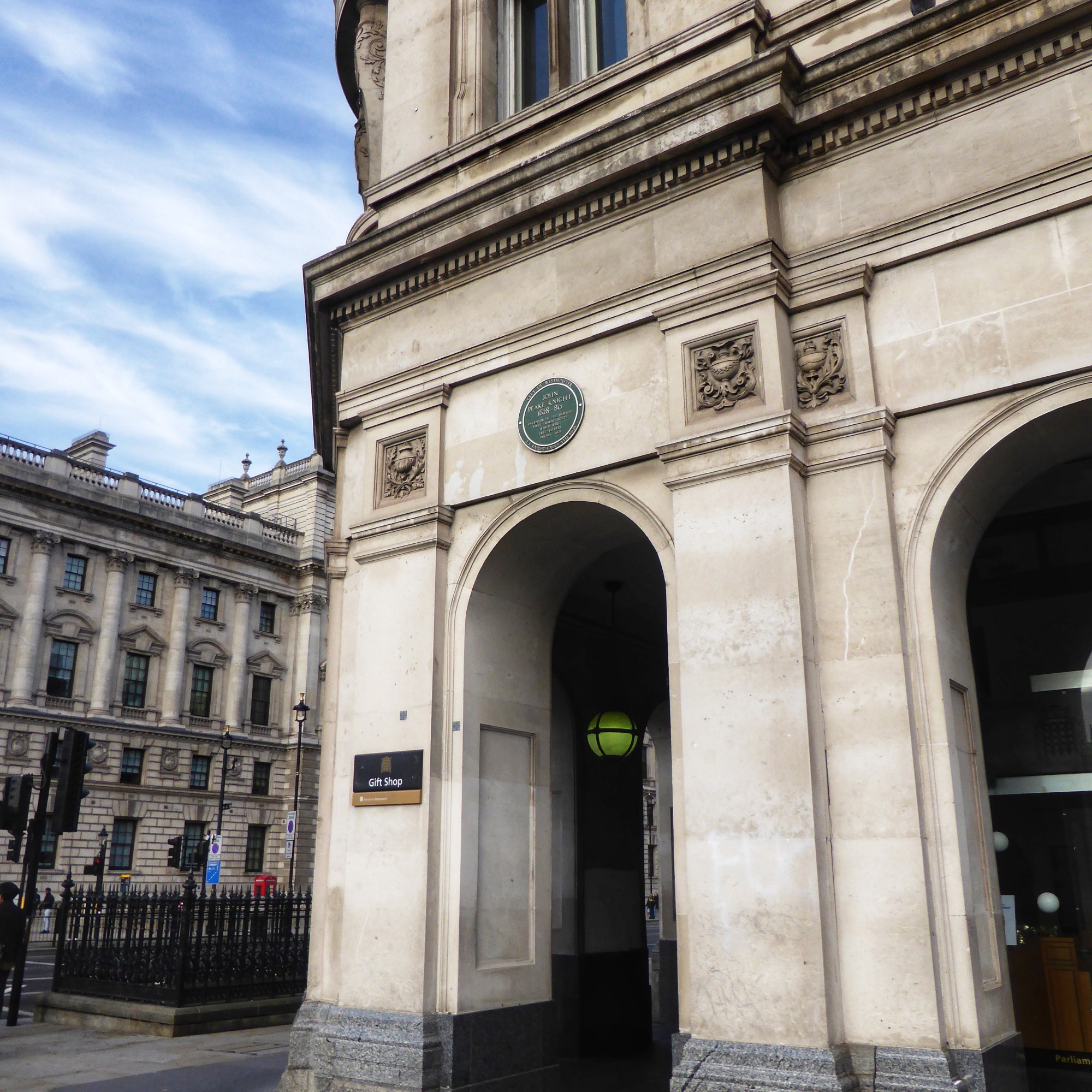

It was once pretty chaotic here in Parliament Square. Just think somewhere on the spectrum of Mad Max and Fast and Furious: Victorian Drift. Okay, maybe not quite that bad, but you get the idea. In the months before the light’s installation, a policeman had been killed and two Members of Parliament had been badly injured in traffic accidents.
The light wasn’t quite as we would recognise one today. It still operated under the universal “red means stop, green means go”. But it also had wings – semaphore arms. When the arms were lowered, you could go, but when extended horizontally, this meant stop.

The use of the lights and the arms was because the lights were gas-powered and so weren’t bright enough to be seen during the day. That’s when you’d rely on the semaphore arms. The traffic light also wasn’t automatic and had to be controlled from the base by a police operator.
There were only 2 discernible issues in this otherwise flawless plan:
- It kept breaking down and had the unfortunate tendency to explode – often to the detriment of the poor policeman operating the light.
- Lots of people chose to ignore the traffic light anyway.
One of my favourite stories was featured in a nineteenth-century newspaper. A journalist was in a taxi on his way towards Parliament Square from across Westminster Bridge. When they neared this new red-light-green-light-wavy-arm contraption (as I assume early models were officially named), the man asked his cabbie, his driver, what the light meant. The cabdriver simply replied, ‘Another o’ them fakements put up to vex the poor cabbies.’
Unsurprisingly, the traffic light was removed within about a year, and London didn’t get traffic lights again until 1926!
There are bells in the pubs which tell MPs when they need to vote
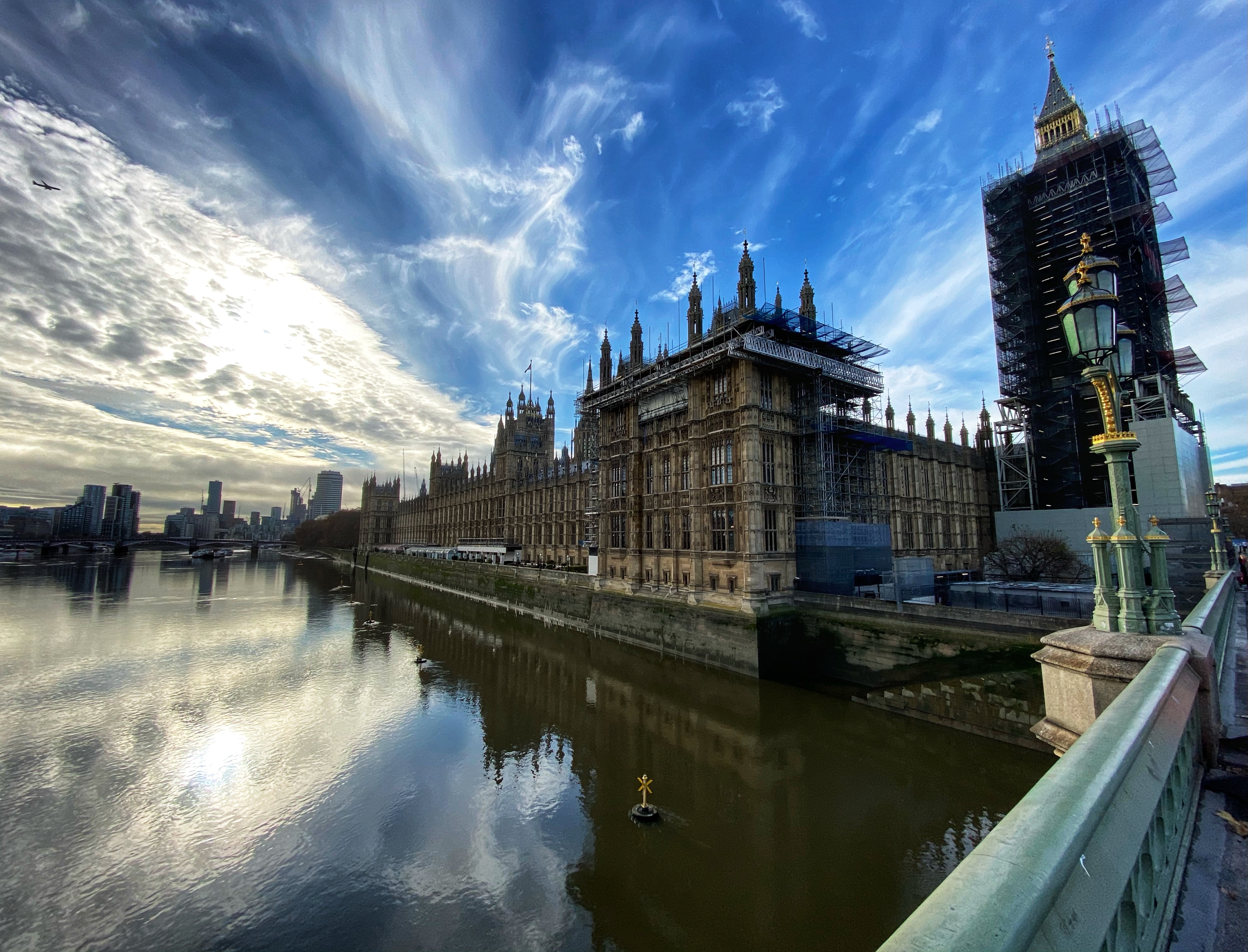
Not just any bells, but Parliamentary Division Bells, which sound very official and important – they’re basically “It’s time to vote” bells. Within the Palace of Westminster are the Houses of Parliament (consisting of the House of Commons and the House of Lords), where our government debate and vote on the issues of the day. When the Speaker calls a vote – known as a division – the Members of Parliament who aren’t already in the debate are notified by the bells and have eight minutes to reach the voting lobbies to cast their vote. If they don’t make it in time, then they just get a nice view of the lobbies’ locked doors.

As of 2014, there were over 380 of these bells located within the Palace of Westminster and on the Parliamentary estate. There are another 170+ in various government departments, hotels, restaurants, and even a few private residences. True to English form, they’re also in the pubs. (Obviously pubs within an eight minute dash of the Palace of Westminster – some locations definitely more of a stretch than others…) You’ll find these bells in pubs like The Red Lion or The Westminster Arms. One of them, St. Stephen’s Tavern, is located in Parliament Square – a pub dating back to 1875.
Many of these extraneous pub bells are now defunct or in various states of disrepair. To be fair, it was a system installed about 150 years ago, before the convenience of smart phones. Now, as with everything, there’s apparently an app for that, which most MPs rely on to tell them it’s time to down their drinks and rush to exercise their democratic responsibility…
If you’re interested in finding some of these old Division Bells, there’s an excellent map by Adam Dant on Spitalfields Life.
The Palace of Westminster has its own Jewel House
Although, I should say, there aren’t actually any jewels still in it…
What stands today is a fourteenth-century tower which was once part of the Medieval Palace of Westminster complex.
I wouldn’t be surprised if many people found it odd that our national government is located in a palace. The name’s a tad misleading. The Palace of Westminster is no longer a royal palace, but it started as one so the name has stuck around.
There’s been a palace here for a long time too. Since the eleventh-century. By comparison, the current 150 year old structure is practically brand new! So while it’s been the site of a palace for the last 1,000-odd years, that original structure was altered, added to, and rebuilt a lot in that time. The most significant change came in 1834 when a huge fire destroyed most of the palace complex. Only a few sections of the old palace survived, most notably Westminster Hall and the Jewel Tower.

The Jewel Tower was built between 1365 and 1366 on the orders of King Edward III to store his private collection of jewels, gold and silver. An understandably valuable and enviable collection, the Jewel Tower was complete with its own moat to the south and west to dissuade curious fingers. The moat was even complete with fish! Probably not something appreciated by William Usshebourne, one of Edward III’s keepers of the Privy Palace in the fourteenth-century, who died after choking on the bone of a pike caught in said moat.
Ninety-eight boatloads of stone were brought from Kent to London for this solitary tower. The effort it would have taken to build a structure like this is, I think, quite easily forgotten nowadays, especially as the tower is somewhat dwarfed by the nineteenth-century Palace of Westminster next door.
The Jewel House stayed true to its name, storing jewels, until the sixteenth-century and since then it’s been used for lots of different things. Already by 1547, it had been seriously downgraded in the hierarchy of storage – an inventory that year lists items inside its walls such as bed linen, furniture, and even the toy dolls of the young Princesses Mary and Elizabeth, Henry VIII’s daughters.

For centuries, it was also used as an archive for the House of Lords and then from 1869 as a testing facility for the Board of Trade Standards Department, often known as Weights and Measures. So basically the building stored the country’s official weights and measures, by which all other weights and measures were judged for accuracy. Yes, it might sound deathly boring, but they maintained the fine line between order and chaos. Not all heroes wear capes.
The Jewel House is now looked after by English Heritage and open to the general public.


(Photos: Wikimedia Commons and Google Maps)
Parliament Square was once an island
Yes. Once upon a time it was not just the river Thames which flowed through London. There were many other rivers, such as the Fleet, the Westbourne, and the Walbrook, which provided Londoners with transport, trade, a sewage system, and drinking water. I agree, some of those things should definitely be mutually exclusive, but we didn’t always know that drinking sewage water was bad… Anyway, gradually over the years those rivers have been covered up and incorporated into London’s underground sewers. They’re now affectionately referred to as the Lost Rivers of London.
The general area of Parliament Square was once called Thorney Island. I learnt only recently that the ending ‘-ey’ is actually an Old English suffix for ‘island’, meaning the way we refer to it now basically translates to ‘Thorn Island Island’ – one of those strange linguistic quirks of history, I guess. The island was formed of tributaries of the river Tyburn and it was here, in Westminster, that they flowed into the Thames.
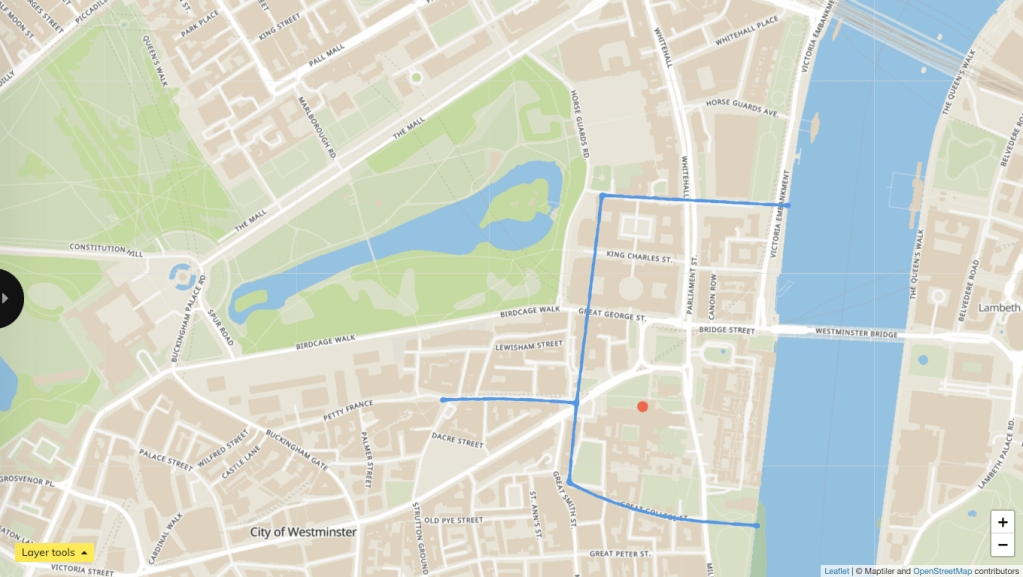
The commonly accepted theory was that the water split at the end of today’s Tothill Street, one leg crossed Whitehall below Downing Street while the other flowed down Great College Street (Map: Layers of London)
When Benedictine monks arrived in the area in 960 AD to build their monastery on the site, it was still an island and a wet, marshy island at that. It was subject to consistent flooding and was generally a pretty unpleasant place. It was this site which would eventually become Westminster Abbey.
The monks did an excellent job of sprucing the place up. Tenth-century gentrification, if you will, because already by the following century, the area was being described as a “delightful place, surrounded by fertile land and green fields”. It’s not clear when the island ceased to be. We have the lack of maps and written records to thank for that. Probably the only lasting reminder of this once soggy island is Thorney Street which you can find near Lambeth Bridge. Next time you’re in the area, however, and see the cars and buses racing down the roads, imagine flowing water there instead – it’s a bit surreal!
Fancy a joust in Parliament Square, anyone?
Although this was behaviour more acceptable in the sixteenth-century than the twenty-first… Try showing up in Parliament Square today with armour, a horse, and a huge stick and you’ll probably get arrested.
But! Let’s go back in time to when Parliament Square played host to one of the most extravagant tournaments Europe had ever seen. The year was 1511 and the King was Henry VIII. He was celebrating the birth of his son to his first wife Catherine of Aragon. Sadly, however, little prince Henry only survived a few weeks, but at the time of the tournament on 12th and 13th February 1511, this was still a joyous, celebratory time.

The tournament was held in the rough location of Parliament Square today. It was to be two days of jousting and pageantry, feasting and dancing. In the sixteenth-century, these jousting events, or tourneys, as they were called, had an almost fairytale, chivalric quality to them. The tourney was announced in the form of a fictional challenge: the kingdom of Coeur Noble, “Noble Heart”, jousting for the honour of the Queen! Coeur Noble provided four of its best knights, including Henry VIII as Coeur Loyal (“Loyal Heart” – ironic, seeing as he was to have five more wives after Catherine).
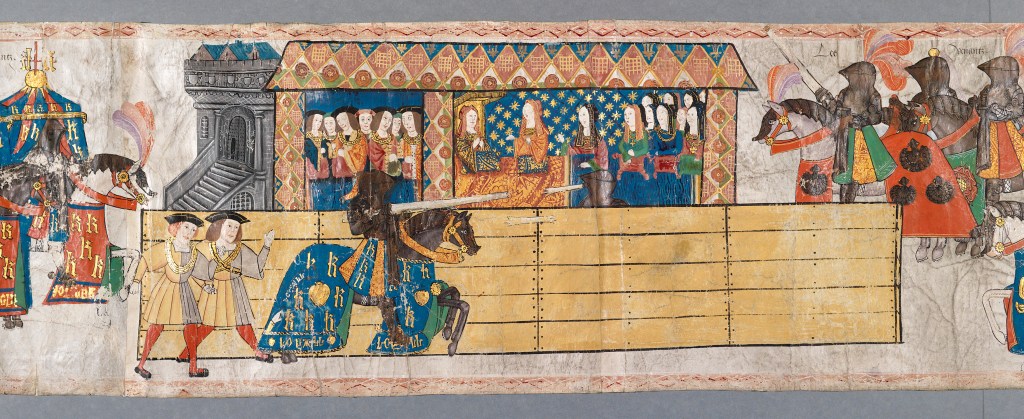
Before the tourney, a procession made its way into the square and the statement piece was undoubtedly a huge castle made of gold paper, wheeled in by a golden lion and a silver antelope. On their backs, ladies in gowns of russet and blue damask. Encasing the castle was an entire artificial forest, 8m long and 5m wide, made of hawthorn, oak, hazel, maple, birch, fern, broom, and fir. Atop the ramparts of the castle were the four knights of Coeur Noble! It would have been a magnificent site.
This castle would have been accompanied by all manner of attendants, musicians and trumpeters, and we’re lucky to have a visual record of this event in the form of the Westminster Tournament Roll, a 18m roll of parchment, picturing different parts of the tournament. One of the trumpeters was John Blanke, and his inclusion in the Westminster Roll makes him the only identifiable Black person in sixteenth-century English art.
It’s likely that he came to England with Catherine of Aragon’s entourage. What’s amazing is that he’s not just a picture and a name, we can find some of his voice in the historical record! There are surviving documents related to and written by him. In 1507, he petitioned Henry VIII himself for a raise and for the position of a more senior trumpeter. He asserted that his wages were not sufficient to serve the king properly ‘as other your trumpets do’ and noted that he intended to serve the King for the rest of his life (I’d say that that kind of loyalty definitely deserves a raise!). He was successful and his wages were increased to the figure he’d requested. We lose track of Blanke in later life, but before that we know in 1512 that he got married. He was given a gown of violet cloth, a bonnet, and a hat by the King which indicates his royal favour with Henry VIII.
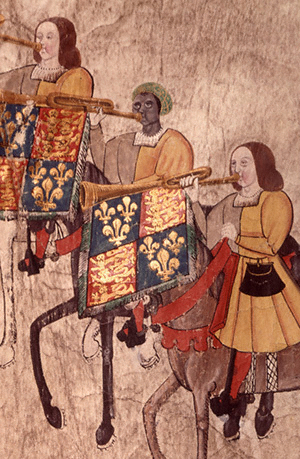
So there you have it – some hidden history of Parliament Square! From traffic lights to Tudor tourneys.
If you enjoyed, consider subscribing to my newsletter to be the first to hear about future posts and tours! Find out more: ramblinglondontours.com/the-badger-bulletin/
Sources
Traffic Light
- ‘The man who gave us traffic lights’, BBC News, (accessed 24/05/2021)
- ‘Here’s What The World’s First Traffic Lights, In Westminster, Looked Like’, Londonist, (accessed 24/05/2021)
- ‘Traffic Lights’, Wikipedia, (accessed 24/05/2021)
Parliamentary Division Bells
- ‘Division Bells (2014)’, UK Parliament, (accessed 24/05/2021)
- ‘Parliamentary Division Bells’, Atlas Obscura, (accessed 24/05/2021)
- ‘Parliament’s division bell system warning MPs to vote’, BBC News, (accessed 24/05/2021)
- ‘The Division Bells of Westminster’, Spitalfields Life, (accessed 24/05/2021)
- ‘St. Stephen’s Tavern’, Historic England, (accessed 26/05/2021)
Jewel Tower
- ‘Architecture of the Palace: Key dates’, UK Parliament, (accessed 24/05/2021)
- ‘Anglo-Saxon Origins’, UK Parliament, (accessed 24/05/2021)
- ‘The Jewel Tower 1365’, UK Parliament, (accessed 24/05/2021)
- ‘History of the Jewel Tower’, English Heritage, (accessed 24/05/2021)
- ‘Divine Retribution at the Jewel Tower’, English Heritage, (accessed 24/05/2021)
- ‘Significance of the Jewel Tower’, English Heritage, (accessed 24/05/2021)
Thorney Island
- ‘Searching for London’s lost rivers with Dr Tom Bolton’, City of Westminster Libraries online event, (12/05/2021)
- ‘Benedictine monastery’, Westminster Abbey, (accessed 25/05/2021)
- ‘Thorney Island’, Wikipedia, (accessed 25/05/2021)
- ‘What is Thorney Island?’, Thorney Island Society, (accessed 25/05/2021)
- ‘The hidden history of Westminster’, BBC News (accessed 25/05/2021)
Henry VIII’s Tourney
- Black Tudors, Miranda Kaufmann
- ‘Henry VIII’s Westminster Tournament 1511’, The History of England, (accessed 25/05/2021)
- ‘John Blanke’, Historic Royal Palaces, (accessed 25/05/2021)


Very interesting. Thank you for all the research ð§ xx
Sent from my iPhone
>
Thank you for sharing interesting stories and facts about Parliament Square. Delighted to know of it. Looking forward for more interesting posts like this 🙂
Thank you so much for reading it!